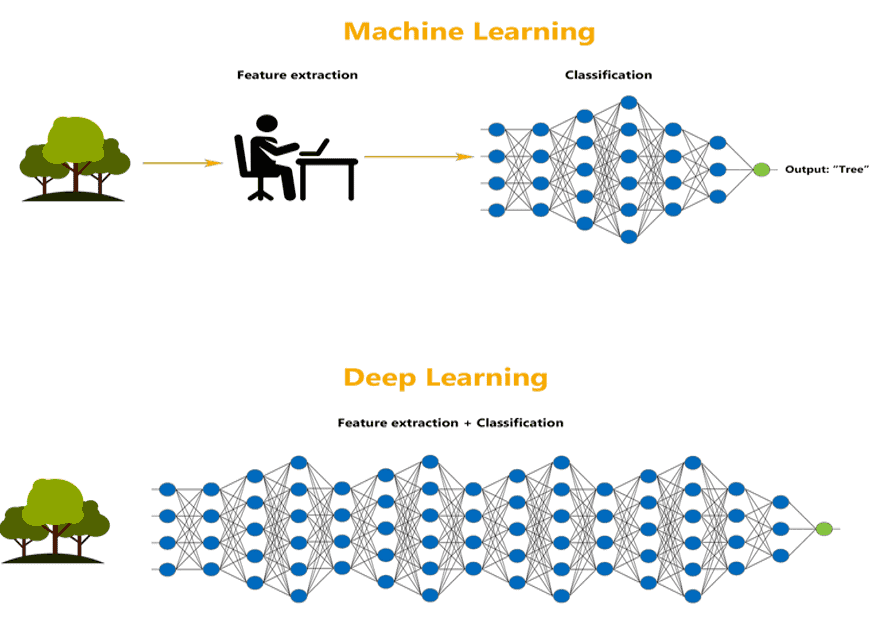Yes, we're now running our Black Friday Sale. All Access and Pro are 33% off until 2nd December, 2025:
Machine Learning vs. Deep Learning
Last updated: August 22, 2024
1. Introduction
In this tutorial, we’ll talk about the existing differences between machine learning and deep learning.
2. Short Overview of Machine Learning and Deep Learning
Machine learning is a field within artificial intelligence that focuses on teaching computers to learn from examples (data) and make decisions or predictions based on that learning.
Machine learning uses statistical models and algorithms to learn from examples (data). It has found applications in many domains, from speech recognition to image segmentation and recommendation systems.
On the other hand, deep learning is a subfield of machine learning that uses artificial neural networks with many hidden layers.
3. Differences Between Machine Learning and Deep Learning
Concerning performance on complex tasks such as image and speech recognition, deep learning generally outperforms standard machine learning algorithms because of its ability to learn features from the data automatically.
However, this comes at the cost of longer training times and the need for larger datasets. Machine learning algorithms can perform well on more straightforward tasks for which deep learning may be overkill.
Machine learning algorithms require manual feature engineering, which involves selecting and extracting relevant features from the data. In contrast, deep learning doesn’t require feature engineering as it can automatically learn features from the data:

Here, the choice between deep learning and machine learning is guided by the specific task and available resources, including data, time, and computing power.
3.1. Interpretability
Standard machine learning algorithms are generally more interpretable than deep learning algorithms.
This means it’s easier to understand how a model produces the output. Although more powerful, deep learning models are considered black boxes since it’s difficult to know how they arrive at their conclusions.
3.2. When Is a Neural Network Deep?
The main difference between deep and standard networks is the number of layers. Deep networks have multiple hidden layers between the input and output layers.
While non-deep networks are simpler and easier to train, deep networks can achieve higher accuracy in solving complex problems by learning intricate representations of the input data.
4. Summary Table
Here are the main differences between deep learning and the rest of machine learning:
| Aspect | Non-Deep Machine Learning | Deep Learning |
|---|---|---|
| Feature Engineering | Important step in preparing the data for analysis | Deep networks learn the features automatically from raw data |
| Models | Standard machine learning can use various models | Neural networks |
| Performance | Standard Machine Learning can be perfectly accurate if the task at hand isn’t too complex that we need a deep network. | Generally more accurate, especially when dealing with complex tasks such as image and speech recognition |
| Hardware requirements | Can be run on standard hardware (CPU) | Require more powerful hardware, such as GPUs, to train the neural networks |
In summary, while machine learning is simpler and requires less data and hardware, deep learning is more complex but can achieve higher accuracy, especially for complex tasks.
5. Conclusion
In this article, we talked about the difference between machine learning and deep learning. In conclusion, both machine learning and deep learning have their strengths and weaknesses. Machine learning is a simpler approach that requires less data and hardware, making it more accessible for smaller projects.
On the other hand, deep learning is more complex but can achieve higher accuracy, especially for complex tasks. Ultimately, the choice between machine learning and deep learning depends on the specific needs and goals of the project.